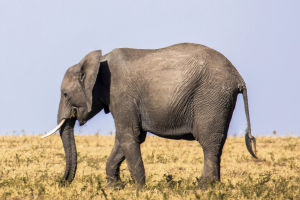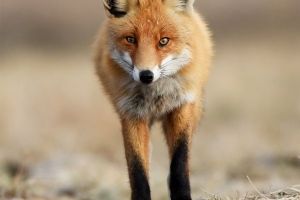Aquila Chrysaetos is a magnificent and powerful bird of prey belonging to the eagle family.
It is one of the largest eagles in the world, showcasing remarkable flying abilities and exceptional hunting skills.
Measuring approximately 75-90 cm in body length, with a wingspan that can reach 2.1-2.4 meters, and weighing between 4-6.7 kg, the golden eagle possesses distinct physical characteristics.
Its body is predominantly adorned with dark brown plumage, while the head and neck display lighter hues. The whitetail stands out prominently. Although males and females exhibit similar appearances, males are usually slightly larger in size.
Juvenile golden eagles resemble adults but have darker body coloration. In their first year, their tail feathers showcase white coloration with a broad black end spot. The base of their flight feathers is white, forming white spots beneath the wings.
As they mature, the tail becomes fully white, and the white spots on the underwings gradually diminish. The under tail coverts transition from brown to reddish brown and finally dark reddish brown.
The golden eagle's chestnut brown iris, black-tipped mouth, blue-brown or blue-gray cere and toes, and black claws contribute to its striking appearance.
Golden eagles have a wide distribution across the cold and temperate regions of the northern hemisphere, primarily inhabiting mountains, canyons, and open areas. Their diet consists of small mammals, birds, and other birds of prey.
They employ their keen eyesight to soar high in the air, diligently searching for potential prey. Once a target is spotted, the golden eagle executes a swift dive, snatching the prey with its sharp claws and dispatching it efficiently with its powerful beak.
The claws of the golden eagle possess formidable strength, enabling them to capture prey several times their own weight. Equipped with sharp talons, they maintain a firm grip on the prey, ensuring stability even during flight.
Additionally, the golden eagle's robust beak aids in tearing and crushing the flesh of its captured prey.
Golden eagles exhibit exceptional hunting skills, thanks to their acute vision and keen hearing, which enable them to detect prey from considerable distances. These birds are also known for their monogamous behavior, with a pair of golden eagles forming a strong and lifelong partnership.
While it is not common for golden eagles to prey on wolves, there have been rare instances of them attempting to catch wolves. Trained golden eagles have been known to chase wolves across grasslands, eventually seizing them by the neck and eyes, effectively incapacitating them.
Records indicate that a single golden eagle has successfully caught up to 14 wolves consecutively. However, it is worth noting that the carrying capacity of a golden eagle is relatively limited, usually less than 1 kg.
Despite being subjected to habitat destruction and human activities, leading to population decline in certain areas, golden eagles are protected in numerous regions. They are regarded as significant symbols of nature and are recognized as conservation priorities. Several countries have established specialized protected areas to ensure the safeguarding of golden eagles and their habitats.
The golden eagle also holds cultural significance, often being employed as a symbol representing strength, freedom, and nobility for various countries and regions.


